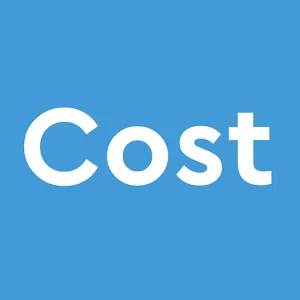As a business owner or manager, one of the most critical aspects of project planning is estimating the cost accurately. Mastering estimating is crucial to ensure that your project remains profitable and on budget. However, estimating costs can be a daunting task, especially for new or inexperienced professionals. Fortunately, there are various tips and tricks that you can apply to ensure accurate budgeting. In this article, we will explore some of the best practices for mastering estimating.
From understanding the project scope and breaking down costs to identifying potential risks and contingencies, we will cover the essential steps to help you create a reliable budget estimate. Whether you are working on a small or large project, these tips and tricks will help you improve your estimating skills and ensure project success. So, let’s dive in and master the art of estimating!
Importance of Accurate Cost Estimating
Accurate cost estimating is essential for the success of any project. It helps businesses to plan and budget effectively, avoid cost overruns, and ensure that they remain competitive in the market. Accurate estimates also help businesses to make informed decisions about resource allocation and project prioritization. By providing reliable estimates, businesses can avoid unpleasant surprises and ensure that they deliver projects within budget and on time.
Inaccurate estimating, on the other hand, can lead to significant problems. It can result in cost overruns, delays, and even project failure. Inaccurate estimates can also lead to resource shortages, poor decision-making, and reduced profitability. Therefore, it is crucial to master estimating to ensure that you can provide reliable estimates that help your business to succeed.
Different Types of Cost Estimates
There are different types of cost estimates that you can use depending on the project’s complexity and stage. The three most common types of cost estimates are:
Rough Order of Magnitude (ROM)
A Rough Order of Magnitude (ROM) estimate is the most preliminary type of estimate. It provides a broad range of costs based on limited information about the project. ROM estimates are usually used during the project’s early stages to help businesses determine whether it is feasible and worth pursuing.
Budget Estimate
A Budget Estimate is a more detailed estimate than ROM. It provides a cost range based on a more detailed project plan. Budget Estimates are typically used during the planning phase to help businesses determine the project’s overall cost.
Definitive Estimate
A Definitive Estimate is the most detailed and accurate type of estimate. It provides an accurate estimate based on a detailed project plan, including all project activities, resources, and risks. Definitive Estimates are typically used during the execution phase to help businesses manage project costs.
Factors Affecting Cost Estimates
Several factors can affect the accuracy of estimates. Some of the most common factors include:
Project Scope
The project scope defines the project’s objectives, deliverables, and requirements. Accurate estimating requires a detailed understanding of the project scope. Failure to understand the scope can lead to inaccurate estimates.
Resource Availability
The availability of resources, including labor, materials, and equipment, can significantly impact estimates. Limited resource availability can lead to higher costs and longer project durations.
Project Complexity
Complex projects are more challenging to estimate accurately than simple projects. Complex projects require more detailed planning and analysis to ensure that all project activities and risks are considered.
Market Conditions
Market conditions, including inflation, supply and demand, and currency exchange rates, can affect project costs. Changes in market conditions can significantly impact cost estimates.
Cost Estimating Tools and Software
Several cost estimating tools and software are available to help businesses create accurate estimates. These tools and software can help businesses to:
Identify the project scope and requirements
Accurately identifying the project scope and requirements is crucial for accurate estimating. Many tools and software can assist businesses in identifying the project scope and requirements.
Estimate costs
Tools and software can help businesses to estimate costs accurately. They can provide cost models, cost databases, and other resources to help businesses create accurate cost estimates.
Manage and track project costs
Tools and software can help businesses to manage and track project costs. They can provide real-time cost tracking, cost reporting, and other features that help businesses to stay on budget.
Steps to Creating an Accurate Cost Estimate
Creating an accurate estimate requires a detailed understanding of the project scope, requirements, and risks. The following are the essential steps to creating an accurate cost estimate:
Step 1: Define the project scope and requirements
The first step in creating an accurate estimate is to define the project scope and requirements. This involves identifying the project objectives, deliverables, and requirements.
Step 2: Identify project risks
Identifying project risks is crucial for creating an accurate estimate. Risks can significantly impact project costs and must be considered when creating a estimate.
Step 3: Break down project activities
Breaking down project activities into smaller, more manageable tasks is crucial for accurate estimating. This involves identifying all project activities, resources, and timelines.
Step 4: Estimate costs
Estimating costs involves using cost models, cost databases, and other resources to determine project costs. This step requires careful analysis of all project activities and resources.
Step 5: Add contingencies
Adding contingencies is crucial for creating an accurate estimate. Contingencies help businesses to account for unexpected events that can impact project costs.
Common Mistakes to Avoid in Cost Estimating
Several common mistakes can significantly impact the accuracy of estimates. Some of the most common mistakes to avoid include:
Overlooking Risks
Failure to consider project risks can lead to inaccurate cost estimates. Risks must be identified and considered when creating a estimate.
Ignoring Project Scope
Ignoring project scope can lead to inaccurate estimates. Accurate estimating requires a detailed understanding of the project scope and requirements.
Underestimating Resource Requirements
Underestimating resource requirements can lead to inaccurate estimates. All resources, including labor, materials, and equipment, must be considered when creating a estimate.
Tips for Improving Your Cost Estimating Skills
Improving your estimating skills requires practice and dedication. The following are some tips for improving your estimating skills:
Learn from experience
Learning from experience is crucial for improving your estimating skills. Reviewing past projects and analyzing estimates can help you identify areas for improvement.
Stay up-to-date on industry trends
Staying up-to-date on industry trends can help you improve your estimating skills. This involves attending conferences, reading industry publications, and networking with other professionals.
Use cost estimating tools and software
Using cost estimating tools and software can help you improve your estimating skills. These tools can provide valuable resources and help you create more accurate estimates.
Tricks for Managing and Tracking Project Costs
Managing and tracking project costs is crucial for ensuring that projects remain on budget and profitable. The following are some tricks for managing and tracking project costs:
Monitor project costs in real-time
Monitoring project costs in real-time is crucial for staying on budget. Real-time monitoring can help businesses to identify issues early and take corrective action.
Use cost tracking software
Using cost tracking software can help businesses to manage and track project costs. These tools can provide real-time cost reporting and help businesses stay on budget.
Implement a change management process
Implementing a change management process is crucial for managing project costs. This involves reviewing and approving all changes to the project scope, requirements, and costs.
Best Practices for Presenting Cost Estimates to Stakeholders
Presenting estimates to stakeholders requires effective communication and presentation skills. The following are some best practices for presenting estimates to stakeholders:
Use clear and concise language
Using clear and concise language is crucial for presenting estimates to stakeholders. Steer clear of technical jargon and instead utilise language that is readily comprehensible to all stakeholders.
Provide supporting documentation
Providing supporting documentation, including cost models and cost databases, can help stakeholders understand the estimate’s basis.
Be prepared to answer questions
Being prepared to answer questions is crucial for presenting cost estimates to stakeholders. Anticipate questions and prepare responses in advance.
Conclusion
Mastering cost estimating is crucial for the success of any project. Accurate estimates help businesses to plan and budget effectively, avoid cost overruns, and ensure that they remain competitive in the market. By following the best practices outlined in this article, you can improve your estimating skills and ensure project success. Remember to consider all project activities, resources, and risks, and to stay up-to-date on industry trends and best practices. By doing so, you can provide reliable estimates that help your business to succeed.
As construction technology advances, so does the future of estimating in the construction industry, moving towards more efficient and convenient methods. Nowadays, for building cost estimator UK, house construction cost, there are digital tools such as our software that make the estimation process quicker and more accurate, which is becoming increasingly relevant for professionals and businesses. This trend makes learning about estimating essential for those in the Construction industry, regardless of experience, and understanding the skills required to undertake this role – such as identified in what a cost estimator does, will help pave the way to pursuing a career in this field.
Building Cost Calculators:
To get accurate, up to date construction costs, use our FREE Building Cost Calculators:












